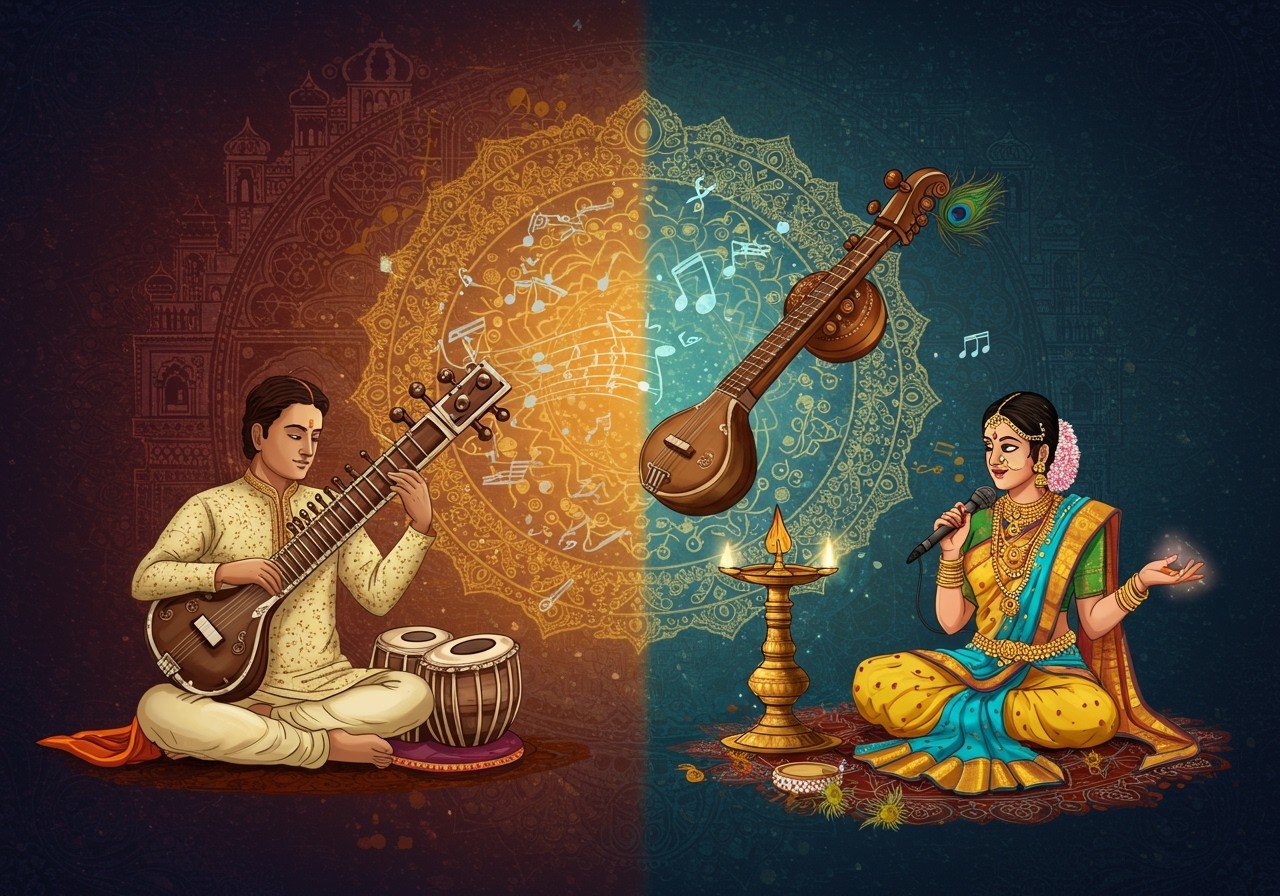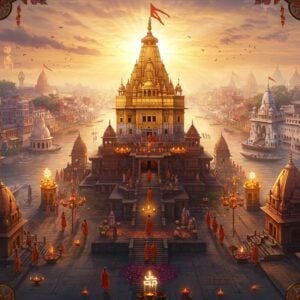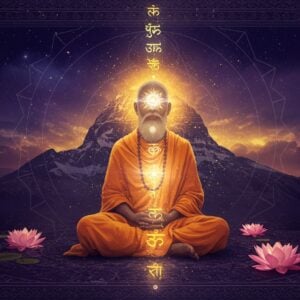
India, a land of diverse cultures and traditions, resonates with a rich tapestry of music. This blog post delves into the unique characteristics, historical background, and cultural significance of North and South Indian classical music, offering a comprehensive understanding of how these musical forms contribute to India’s vibrant cultural landscape.
A Historical Journey Through Indian Music
Indian classical music has ancient roots, tracing back to the Vedas. The Natya Shastra, an ancient treatise on performing arts, significantly influenced music development in India. Key historical figures like Tansen in North India and Tyagaraja in South India made substantial contributions. Regional dynasties and influences from the Mughal and Persian empires also shaped the evolution of these musical traditions.
North Indian Classical Music (Hindustani Sangeet)
Hindustani classical music emphasizes improvisation within melodic frameworks called ragas and rhythmic cycles known as talas. A typical Hindustani performance includes alap (a slow, improvisational introduction), jor (a faster section with rhythmic variations), and gat (the main composition with percussion accompaniment). Instruments like the sitar, tabla, and sarod are prominent.
South Indian Classical Music (Carnatic Sangeet)
Carnatic music focuses on structured compositions called kritis. A Carnatic performance typically includes varnam (an introductory piece), kriti (the central composition), and ragam-tanam-pallavi (an elaborate improvisational section). Vocal music plays a significant role, accompanied by instruments like the veena, mridangam, and violin, which is particularly prominent in South Indian music.
Comparing North and South Indian Music
Both Hindustani and Carnatic music share common roots but differ in their stylistic approaches. Hindustani music emphasizes improvisation, while Carnatic music focuses on structured compositions. Meend (sliding between notes) is characteristic of Hindustani music, while Kampitam (oscillating notes) is typical in Carnatic music. Both traditions use a 12-note system but differ in their melodic and rhythmic approaches.
Delving Deeper into Unique Characteristics
Hindustani music often features instruments like the sitar, tabla, and sarod, and frequently incorporates languages like Hindi, Urdu, and Braj Bhasha. Carnatic music, with its emphasis on vocal music and complex rhythmic patterns (talas), commonly uses instruments like the veena, mridangam, and flute, and its compositions often utilize Sanskrit, Telugu, Tamil, and Kannada.
Cultural Significance and Global Influence
Indian classical music plays a vital role in religious practices, festivals, and celebrations. It has influenced modern Indian cinema and popular music. The guru-shishya parampara (teacher-student tradition) is essential for preserving this rich musical heritage. Both Hindustani and Carnatic music have gained global recognition, influencing world music and contributing to India’s vibrant cultural landscape.
Poojn.in: Your Gateway to Indian Culture
Poojn.in, India’s leading cultural goods and services store, offers a wide array of products to enhance your musical journey. Explore our collection of traditional instruments, religious artifacts, and other cultural items:
- Incense Sticks: Enhance your musical experience with the soothing fragrance of sandalwood incense.
- Sindoor Containers: Discover beautifully crafted sindoor containers, perfect for traditional ceremonies and rituals often associated with musical performances.
Poojn.in also offers a variety of other products related to Indian culture and spirituality. Visit our website to explore our extensive collection and find the perfect items to enrich your connection with India’s rich traditions.
Frequently Asked Questions (FAQs)
What distinguishes North Indian and South Indian music? North Indian (Hindustani) music emphasizes improvisation, while South Indian (Carnatic) music focuses on structured compositions. Hindustani music often features instruments like the sitar and tabla, while Carnatic music prominently uses the veena, mridangam, and violin. The languages used also differ, with Hindustani music often incorporating Hindi and Urdu, while Carnatic music uses languages like Sanskrit, Telugu, and Tamil.
What is the significance of a raga? A raga is a melodic framework that serves as the foundation for both Hindustani and Carnatic music. It defines a specific set of notes and their characteristic movements, providing a structure for improvisation and composition.
Who are some renowned figures in Indian classical music? North Indian music boasts figures like Ravi Shankar and Zakir Hussain, while South Indian music celebrates artists like M.S. Subbulakshmi and L. Subramaniam. These musicians have contributed significantly to the development and popularization of their respective traditions.
Conclusion
Indian classical music, in both its Hindustani and Carnatic forms, offers a rich and diverse tapestry of sounds and traditions. By exploring these musical forms, we gain a deeper appreciation for India’s cultural heritage. Whether you’re drawn to the improvisational brilliance of Hindustani music or the intricate compositions of Carnatic music, the world of Indian classical music awaits your discovery.


